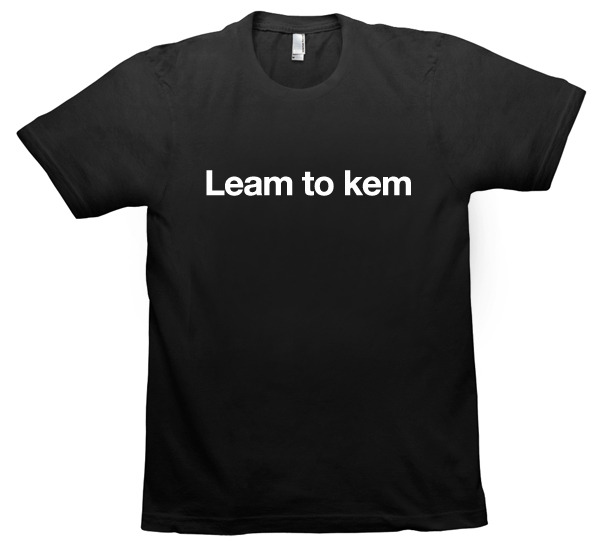Rebirth of the hard copy
It’s a hack of old technologies, aimed at creating a calmer vision of social networking. It’s a limited device that’s meant to fit into our day rather than demand attention.
via fastcodesign.com
It’s a hack of old technologies, aimed at creating a calmer vision of social networking. It’s a limited device that’s meant to fit into our day rather than demand attention.
via fastcodesign.com
How many logos have been set in the Gotham typeface? Enough to start a Tumblr with, that’s how much.
I’M COMIC SANS, ASSHOLE. Another classic from McSweeney’s.
Last Friday Michael Sippey released a statement from Twitter, explaining how they’re reigning in their API and how developers can use it:
These efforts highlight the increasing importance of us providing the core Twitter consumption experience through a consistent set of products and tools. Back in March of 2011, my colleague Ryan Sarver said that developers should not “build client apps that mimic or reproduce the mainstream Twitter consumer client experience.” That guidance continues to apply as much as ever today. Related to that, we’ve already begun to more thoroughly enforce our Developer Rules of the Road with partners, for example with branding, and in the coming weeks, we will be introducing stricter guidelines around how the Twitter API is used.
One of the bigger websites affected by this move was LinkedIn, where you will no longer see tweets showing up in the activity stream on your homepage.
Some developers reacted by resurrecting ideas for a decentralized Twitter.
So rage-against-the-machine. I love it. You gotta take the powah back! C’mon, C’MON!!!
Pardon me if I come across as a bit abrasive, but while Twitter’s move might throw a monkey wrench in some developers’ plans, can’t Twitter do whatever the fuck it pleases? Maybe, because, well, it’s their product?
These calls to create a decentralized, Twitter-like platform are funny. Services/platforms like Twitter (or Facebook or LinkedIn or AIM) rise to prominence because of people with vision. Now maybe some of these people who are proposing this new decentralized platform have that vision, but I’m not holding my breath.
Platforms, even decentralized ones require money and resources. “Free and open” platforms are rarely free and open. Just ask anyone who gets paid to develop for PHP or Red Hat Linux.
So, Twitter’s move. Bold? Douchey? Yes, but it’s their prerogative.
CNet’s Lynn La sits down with Steve Matteson, the typeface designer for Droid and Windows Phone.
Droid Serif and Droid Sans aren’t shabby and he is responsible for Curlz (Curlz?!), but I did like this bit of where he starts with a typeface:
When Matteson begins designing a new typeface, he starts with the lower case g. He likes the way it curves and its proportions. Sometimes, though, he begins with the vowels. They’re in every word, and so the look of the rest of the letters heavily depends on the a, e, i, o, and u.

via Able Parris